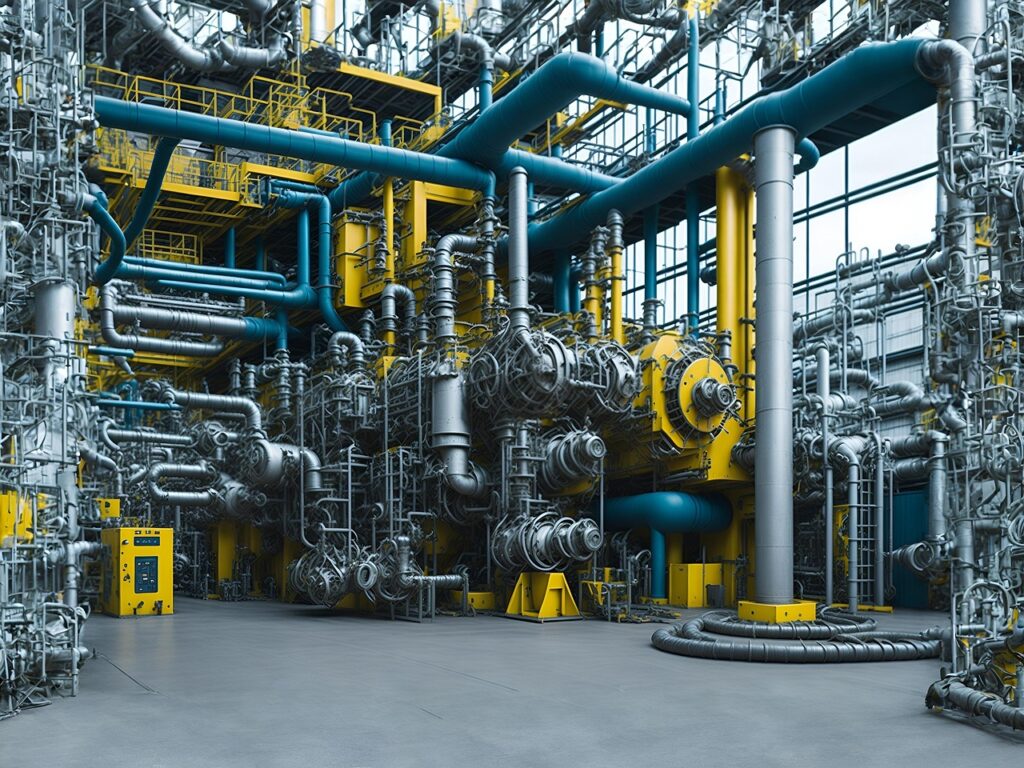India’s GDP Growth and Economic Outlook
India economy today is proving remarkably resilient. Official data show India’s GDP grew 7.4% year-on-year in Q4 of FY2024–25, bringing full-year growth to 6.5%. This growth was driven largely by strong domestic demand and investment. For example, private consumption expanded at a double-digit pace, while fixed capital formation (investment) accelerated in the last quarter. Inflation has trended downward recently, giving policymakers room to support growth. Global institutions remain bullish: the IMF forecasts roughly 6.4% GDP growth for India in 2025 and 2026, making India one of the fastest-growing large economies.
- Robust domestic demand: Private consumption grew ~7.2% in FY2024-25, outpacing GDP, which reflects rising urban and rural spending. Government surveys report that consumer spending remains strong even as inflation eases.
- Investment revival: Gross fixed capital formation jumped 9.4% in Q4 (FY2024-25) over year-ago, after averaging ~6% earlier in the year. For the full year, investment was up about 6.7%. Infrastructure and industry capex are key drivers here.
- Trade and exports: Merchandise exports grew moderately in FY2025 (up ~6.3% for the year), though global headwinds and tariffs may limit near-term gains. Service exports (IT, business services) continue to grow steadily, helping keep the trade deficit manageable.
Economists note that even as global growth slows, India’s economy benefits from a young population, technology adoption, and policy support. Compared to peers, India’s growth rate leads much of Asia, underpinning steady inflows of foreign investment. For FY2025-26, most analysts project growth in the high 6% range, possibly rising further if investment and exports pick up.
Stock Market Trends and Key Drivers

Figure: A trader analyzing multiple stock charts, symbolizing India’s strong equity market performance in recent years (Image: Pixabay).
India’s stock markets have outperformed most global peers. In calendar year 2024, the benchmark NSE Nifty 50 index jumped about +18.7%, while the BSE Sensex gained roughly +17%. These returns placed India’s market as the 3rd-4th best among major world bourses in 2024. A run-up in valuations has been driven by several factors:
- Elections and policy continuity: The 2024 national elections returned the incumbent government, boosting confidence in steady economic reforms. Investors expect ongoing reforms and fiscal prudence, encouraging higher valuations.
- Global cues and inflows: A dip in U.S. interest rates (mid-2024) and positive global outlook helped foreign inflows. Even domestic retail and institutional investors have poured money in: domestic institutions bought a record ₹3.2 lakh crore of equities Jan–Aug 2024, and mutual funds saw historic inflows.
- Sectoral rallies: Realty, autos, public sector banks, pharma and energy stocks led the rally. For instance, real estate financing and homebuilders rallied on strong housing demand; auto firms benefited from new model launches; and energy/Oil companies gained with higher crude prices. Information technology stocks also rebounded as global demand stabilized.
Looking into 2025, analysts are somewhat cautious but still see moderate gains. A Reuters poll (Aug 2025) predicts the Nifty may reach around 25,834 by year-end and 27,950 by end-2026. However, risks are present: U.S. tariffs on Indian exports and rich valuations could slow momentum. Notably, India’s markets trade near 23–24x forward earnings, among the highest globally. On the other hand, any global rate cuts or corporate tax cuts (e.g. reduced GST rates) could spur further rallies. Overall, the India stock market trends remain upbeat, but with volatility as markets digest external headwinds (tariffs, commodity prices) and corporate earnings expectations.
Manufacturing and Industrial Growth

India’s manufacturing and industrial output are also on a growth spurt. Recent surveys and official data show the sector expanding at multi-year highs. The S&P Global/HASCI manufacturing PMI hit 59.3 in August 2025– the strongest reading since February 2008 – indicating rapid expansion in output. This surge reflects strong domestic orders and modest export growth.
- Industrial production: India’s Index of Industrial Production (IIP) rose 3.5% year-on-year in July 2025, led by a 5.4% jump in manufacturing output. This marked improvement from earlier months signals broad-based factory activity. Capital goods, infrastructure goods and consumer durables are the fastest-growing segments, implying an investment cycle revival.
- Output and orders: In Q1 FY2025-26 (Apr–Jun 2025), manufacturing output grew 7.7% YoY. New orders in August remained robust, cushioning any drop in exports. Companies are steadily hiring – employment in manufacturing rose for the 18th straight month as of Aug 2025 – reflecting confidence.
- Power and infrastructure goods: India’s utilities and cement industries are benefiting from higher government and private infrastructure spending. Electricity generation grew modestly, while cement and steel producers reported strong sales as building projects move forward.
However, there are caution flags. U.S. import tariffs (50% on certain Indian goods) may weaken export demand. Yet the overall picture is one of industrial revival: factory orders and production are improving, led by auto, electronics, machinery and consumer durables. Continued investment in sectors like automotive (especially EV components) and electronics is expected to sustain growth.
Key Sectors Driving Growth
Several sectors are powering the economy and market trends in India today:
- Automotive and Auto Components: India remains one of the world’s largest vehicle manufacturers. Demand for cars and two-wheelers is rising. Electric vehicle (EV) production, underpinned by subsidies, is also ramping up. Companies such as Tata Motors and Maruti Suzuki are seeing multi-year highs in sales and valuations.
- Information Technology & Services: The software and IT services sector is a global exporter. Even amid some cyclical softening, tech firms like TCS and Infosys continue to add clients and post healthy revenue. Digital services (cloud, fintech) are areas of high growth.
- Pharmaceuticals and Healthcare: India is a global hub for generic drug manufacturing. Pharma companies benefit from strong global demand, and several have expanded capacity. Healthcare equipment and diagnostics firms are also growing post-pandemic.
- Real Estate and Construction: Urban housing demand and low mortgage rates have bolstered realty stocks. Infrastructure construction (roads, metro rail, power) is another driver. Government projects like Bharatmala highways and urban metro expansions create jobs and material demand.
- Consumer and Retail: A rising middle class and digital payments have turbocharged retail and e-commerce. Fast-moving consumer goods (FMCG) companies are expanding into rural areas. Growth in smartphone, appliance and branded goods consumption supports manufacturing and services alike.
These sectors tie back into stock and GDP trends. For example, the stock indices for autos, realty and pharma were among 2024’s top performers. Likewise, each percentage point of GDP growth now reflects advances in manufacturing and services. Policymakers continue to encourage these sectors: e.g., the PLI (Production-Linked Incentive) schemes target electronics, auto components, textiles, and more, further stimulating manufacturing.
Government Policies Fueling Economic Momentum
Active government policies are helping sustain growth. Key initiatives include:
- Next-Generation Reforms: The 2024–25 Union Budget focused on “Next Gen Reforms”, targeting land, labor, finance and technology to boost productivity. For example, land records are being digitized (ULPIN), labor compliance is being eased through online portals, and credit availability for startups is expanding. Such reforms aim to improve India’s ease-of-doing-business and attract investment.
- PLI (Production-Linked Incentives): Launched across 14 sectors, PLI schemes have so far approved ~764 projects. By end-2024, these projects attracted ₹1.61 lakh crore in commitments, generating manufacturing output of ~₹14 lakh crore and 11.5 lakh jobs. Notably, electronics, automobiles, medical devices, textiles and food processing have seen large investments. These incentives are shifting India’s industrial base from low-end goods to high-value products (e.g. 50% import substitution in telecom equipment).
- Infrastructure spending: The government sharply increased capital expenditure to build roads, railways, ports and power. Capital outlay reached ₹3.01 lakh crore in 2023–24 (a 5.7x jump from 2013–14). Projects under PM Gati Shakti (national master plan) aim to improve logistics and connectivity by coordinating across ministries. A faster road network and upgraded ports reduce costs for businesses and boost industrial activity.
- Monetary and fiscal support: With inflation easing (around 2–3% mid-2025), the Reserve Bank of India has room to keep real interest rates low, supporting credit growth. Fiscal stimulus measures like rural income support (PM-KISAN) and credit guarantees for MSMEs also maintain spending power. A planned reduction in GST rates (e.g. from 18% to 12% on certain goods in Oct 2025) is intended to boost consumption.
Together, these policies create a pro-growth environment. By encouraging domestic production and consumption, they feed into the positive India economic growth news. For instance, analysts note that sectors targeted by government schemes often outperform – a sign that policy incentives are working.
Outlook and Challenges
India’s near-term outlook remains positive, but with caveats. Key risks include high global commodity prices (which can stoke inflation) and external shocks. Notably, the U.S. has imposed steep tariffs on some Indian exports, which could dampen IT and manufacturing revenues in the coming quarters. Corporate profits have only grown modestly (single-digits) despite rapid economic growth, suggesting margins are under pressure.
Valuations in equity markets are stretched, and any surge in yields could trigger volatility. Still, underlying fundamentals are solid. Rural incomes have improved (thanks to record farm output), and urban jobs are growing. Consumer confidence is up, and India’s per capita GDP is steadily rising, widening the tax base and savings. On balance, most forecasters see India continuing to grow faster than most peers: the World Bank and IMF expect India to contribute nearly 20% of global growth in 2024–25.
In conclusion, India economy today is on an upswing. Strong GDP growth (around 6.5–7%), booming stock markets, robust industrial expansion and supportive reforms all point to sustained momentum. The latest economic indicators and business news suggest that domestic demand and investment will keep driving India’s growth. Readers interested in India’s economic trends will find this update valuable for understanding how different sectors and policies are shaping the country’s market and economic landscape.





